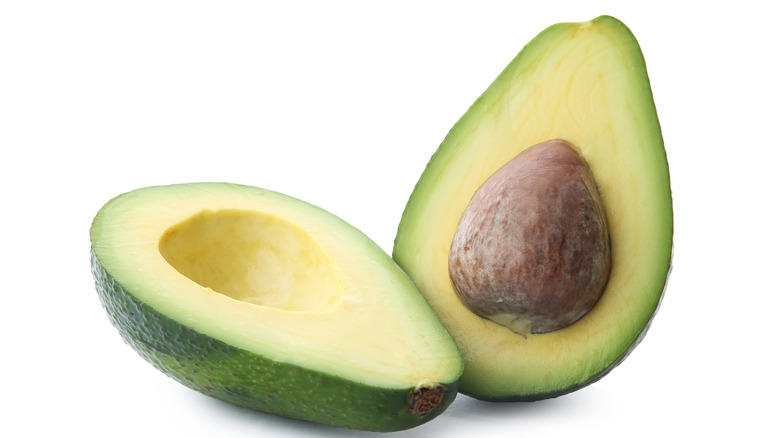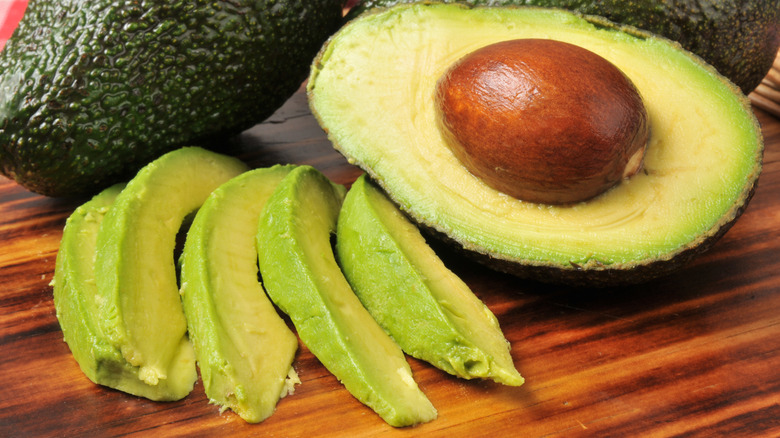When You Eat An Avocado Pit, This Is What Happens
Avocados are a widely beloved fruit due to their health benefits. They're also considered a great ingredient for all meals — even desserts. While the bright green avocado flesh contains those sought-after fatty acids, fiber, and protein, you may be wondering if that brown pit you toss out is worth eating.
It can be tempting to try to use the avocado pit, as it makes up to 18% of the entire fruit (via Healthline). But reviews are mixed on if the pit contains health benefits or even if you should consume it at all. The pit also contains some fiber, fatty acids, and antioxidants like phytochemicals, but more research is needed to determine whether they provide any nutritional benefits to humans.
What makes the pit particularly questionable is that it, as well as the skin, bark, and leaves in an avocado tree, can contain a fungicidal toxin called persin. This toxin can be dangerous for animals, but likely is not as dangerous for humans unless consumed in large amounts (via Spoon University).
Should you eat the avocado pit?
The California Avocado Commission does not recommend consuming the avocado pit, citing a 2013 study by Pennsylvania State University stating that further information is needed to assess the safety of avocado pit extracts.
That doesn't mean that the avocado pit is tossed by everyone, however. In Nigeria, the extract from an avocado pit is used to manage blood pressure (via Healthline). Some studies in animals have found positive links to the extract and a lower risk of heart disease, as well as the capability to fight off bacteria and fungi.
So should you eat the avocado pit? As of now, you may want to avoid it, as it may be risky with the lack of information on the effect of the toxins in humans. If you do decide to try out the avocado pit, be sure to only consume a small amount. Healthline suggests first drying out the pit to dehydrate the seed and then turning it into a powder for smoothies or other drinks.


